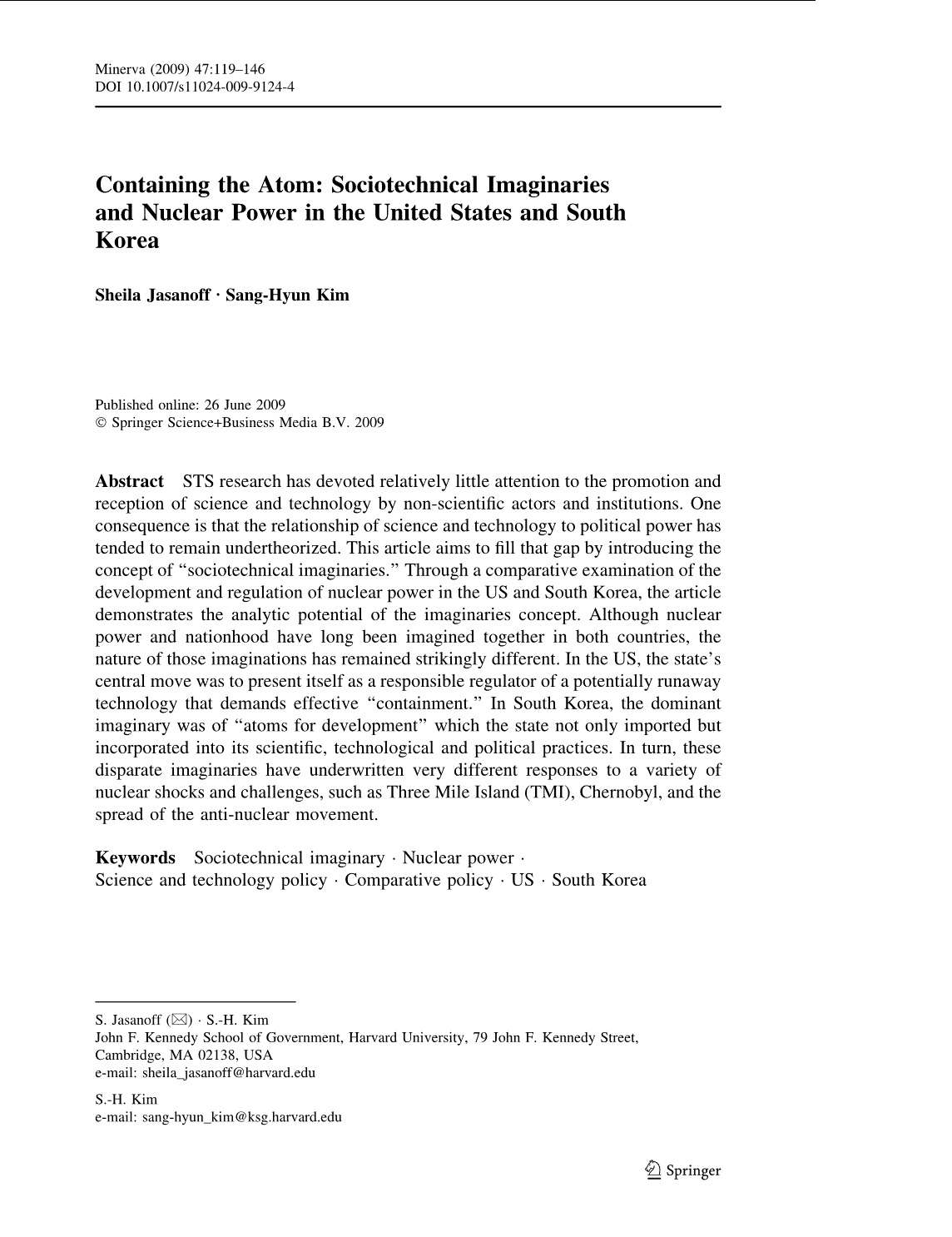Jasanoff, Sheila, and Sang-Hyun Kim. 2009. “Containing the Atom: Sociotechnical Imaginaries and Nuclear Power in the United States and South Korea.” Minerva 47: 119-146. http://www.springerlink.com/content/y2738665782223l6/
By introducing the concept of “sociotechnical imaginaries,” this article examines and compares the historical differences of such imaginaries concerning nuclear power between the United States and South Korea. For the United States, the dominant imagery for nuclear power was a potentially “runaway” technology that required responsible “containment” to keep it under control, whereas South Korea regarded nuclear power as “atoms for development” and “a symbol of the power of science and technology” that the state desired to indigenize. The disparate imaginaries for nuclear power have evolved into not only diverged power-plant designs, but also different “civic epistemologies,” policies, and strategies on radioactive waste management and risk assessment in each country.
As Jasanoff and Kim point out, the imaginaries concept helps explain how the states and their citizens reacted to a variety of nuclear disasters and challenges such as Three Mile Island, Chernobyl, and anti-nuclear movements. This imaginaries concept may also help students analyze how nations that have been embracing nuclear power technology such as Japan, the United States, South Korea, France, Germany, and others, react to the recent triple disasters in Japan on March 11, 2011. Moreover, this article could be used to help encourage students to think about and invent alternative sociotechnical imaginaries of nuclear power beyond containment and development options to contribute to a better understanding of the controversial technology.
–Ling-Fei Lin
![[Teach311 + COVID-19] Collective](https://blogs.ntu.edu.sg/teach311/files/2020/04/Banner.jpg)
